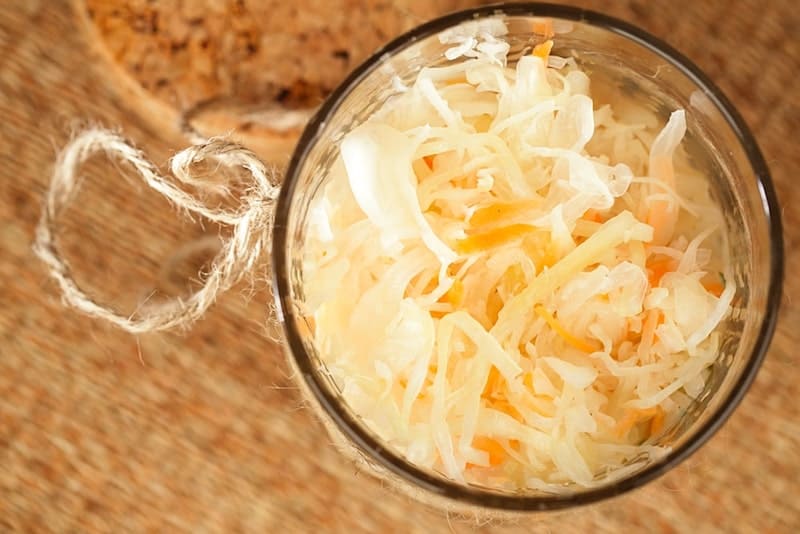How to Make Starter Culture for Salami
Making your own salami sounds excellent, but it’s not an easy process. There are so many things to consider, including which starter culture to choose.
If you’re struggling to find the right product, why not try to make your own?
In exploring the question of how to make starter culture for salami, you’ll find that it’s actually a fairly simple process. It’s really just a matter of adding ingredients that contain their own probiotics (or “good bacteria”) to the mix when making sausage.
This article will provide a guide to make a starter culture for salami using sauerkraut juice.

What is Starter Culture for Salami?
Starter cultures comprise bacteria used for the fermentation process of salami.
Different bacteria can be used for different purposes, like enhancing flavor, smell, or color. However, the most crucial role of starter cultures is keeping the product safe and long-lasting.
But how does it work? By adding the culture to any salami mix, the good bacteria are introduced into the meat.
The good bacteria will fight and destroy the harmful bacteria, making the meat safe and improving its structure, flavor, color, and/or smell.
Single strains or various combinations of bacteria can be used for salami, depending on the effect you want to achieve.
There are many benefits of using starter cultures for salami:
It speeds up the process of fermentation. The process that usually takes several months can be done in just a matter of a few weeks or even days. In this way, you can save time while also making sure your meat is safe to use
It helps bind your meat. Adding a starter culture to your salami will create a firm structure and bind your salami mix. This means no more air pockets or air bubbles
It kills the undesirable bacteria, making the salami safe
Making your own starter culture for salami can be beneficial for several reasons.
First, you’re 100% sure that all the ingredients are of natural origin. This means that you know there are no chemicals in your food, and everything is safe to use. This is especially important for people with allergies.
Learning how to make starter culture for salami is really easy, and you only need a few ingredients.
In addition, you can save money by making your own culture since this option is much cheaper than buying manufactured starter culture.
How to Make Starter Culture for Salami
For the purposes of this article, I’ll talk about how you can use sauerkraut juice as a starter culture.
Then, when you make sauerkraut at home using salt and cabbage, you’ll create bacteria that produce lactic acid. This bacteria family is called Lactobacillus.

In sauerkraut, the bacteria family includes Lactobacillus brevis and Lactobacillus plantarum.
The Lactobacillus plantarum is often included in some commercial starter cultures you can purchase from stores. It’s the kind of fermenter responsible for rapid pH drops, which is what you want to achieve.
If you want to know how to make a starter culture for salami using sauerkraut juice, follow these steps.
- Make sure you sanitize and clean the area and all the equipment you will work with. This is very important because all organisms have to be destroyed.
Tip: You can use vinegar and finish off with an iodophor sanitizer. - Ensure the temperature in your fermentation chamber is between 66 and 67 degrees Fahrenheit (18-19 degrees Celsius).
- Mix the spices you want to use according to your taste. For example, you can use curing salt, white pepper, toasted cumin seed, oregano, and/or chipotle. Ensure you add dextrose to the mix since dextrose will feed the bacteria, thus producing lactic acid.
- Add the spice mix to the meat.
- Then, add the sauerkraut juice – use about ½ cup for 5 lbs. of salami.
- Mix until it becomes sticky.
- Put the meat into casings, brush them down with Mold 600 (Penicillium) – this will grow Penicillium nalgiovenses on the outside throughout the fermentation process.
- Make sure to wrap one small piece of meat in cellophane to test the pH.
- About 60 hours later, your meat should have a pH value of about 4.95, which means your meat has successfully fermented.
- Put the meat into the drying chamber and leave it there for about 6-8 weeks.
Bonus tip: How will you know if it’s ready? You will notice a change in the color and texture. When you pull the salami apart, it shouldn’t crumble like ground meat, but it should stay bound together.
The recipe with sauerkraut juice is one of the most popular, and people who have tried it loved it.
However, there are other products you can use to make your own starter culture for salami.
One such product is yogurt, which is often used as a starter because it can trigger the activation of lactic bacteria in the meat.
The use of yogurt for these purposes is controversial. Some people claim that it works great as a starter culture for meat, while others claim that yogurt is not meant to be used with meat products.
One of the downsides of using yogurt as a starter culture is that it’s hard to work out the exact amount needed since it’s not the same across countries and continents.
Another product that can be used to make starter culture for salami is Acidophilus, a type of probiotic that aids digestion.
It contains cultures that can be used to produce starter cultures for meat and different dairy products.
One of the advantages is that it is widely available and can be bought in health food stores. This is why many people who cannot purchase starter cultures make it using this ingredient.
In Summary
Now you’ve learned how to make a starter culture for your salami. This recipe has it all: It’s easy to make, simple to use, and it’s cheap.
With only a few simple ingredients, you can preserve your meat and enjoy it whenever you want.
Just make sure you follow the steps in our guide and share it with your family and friends.







